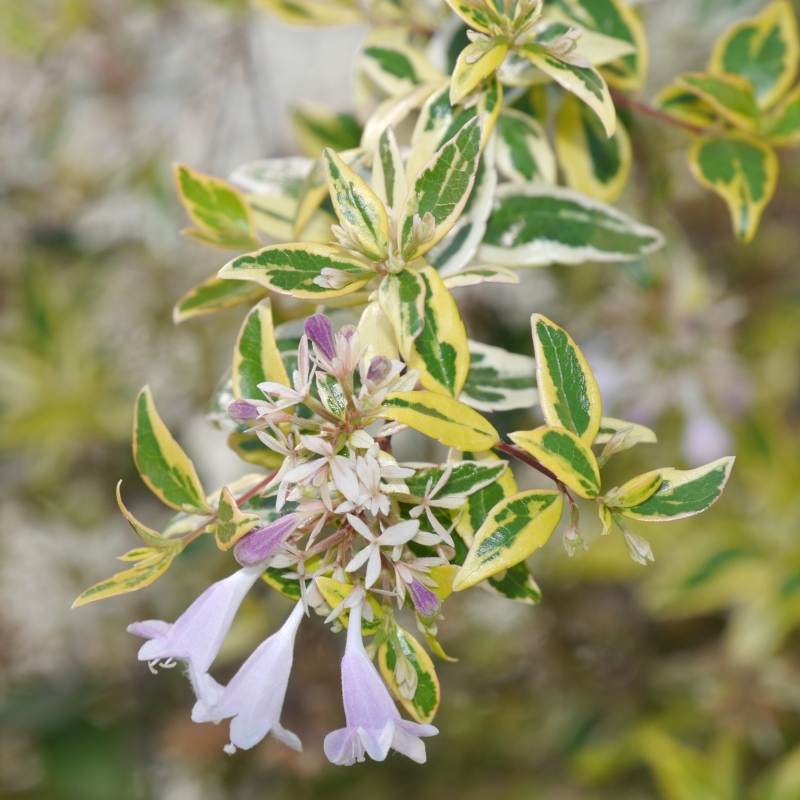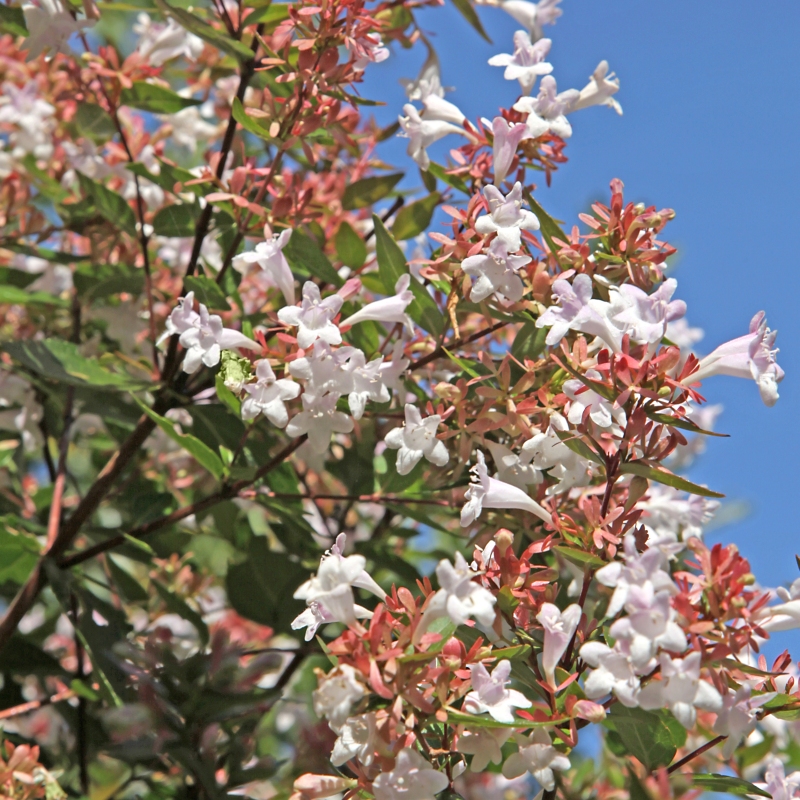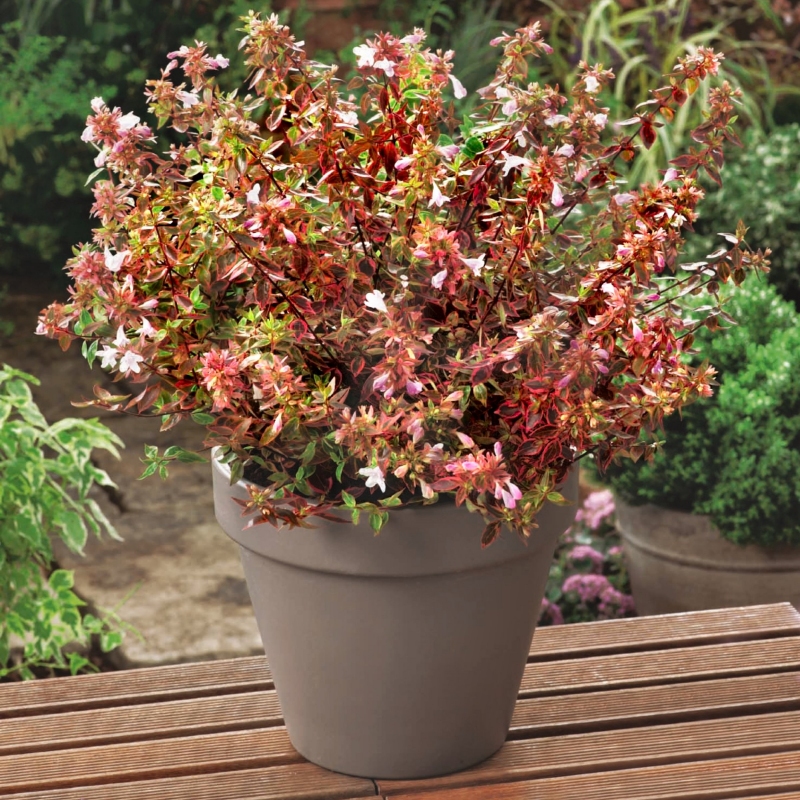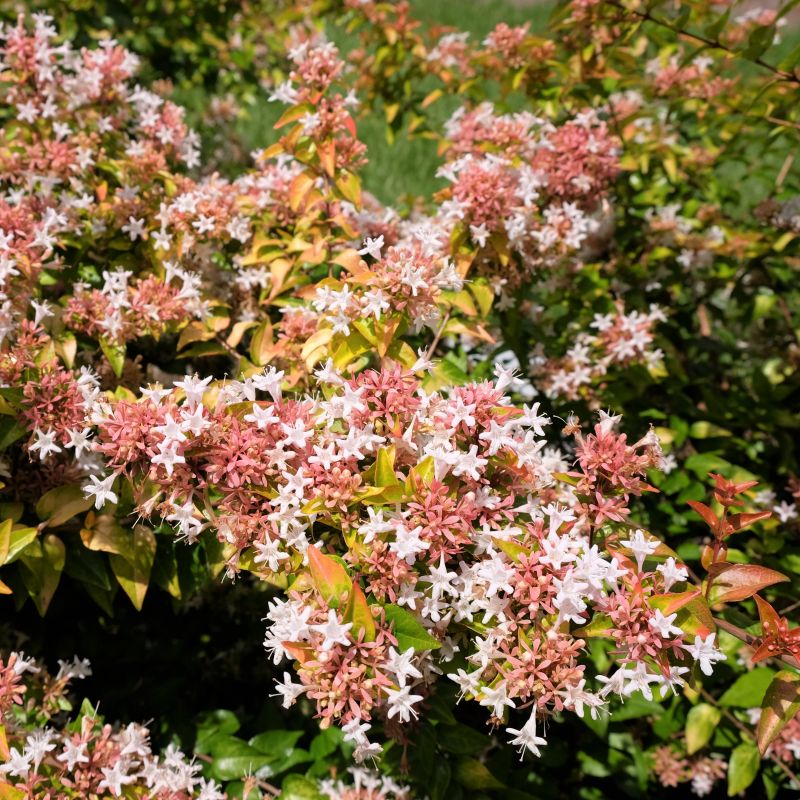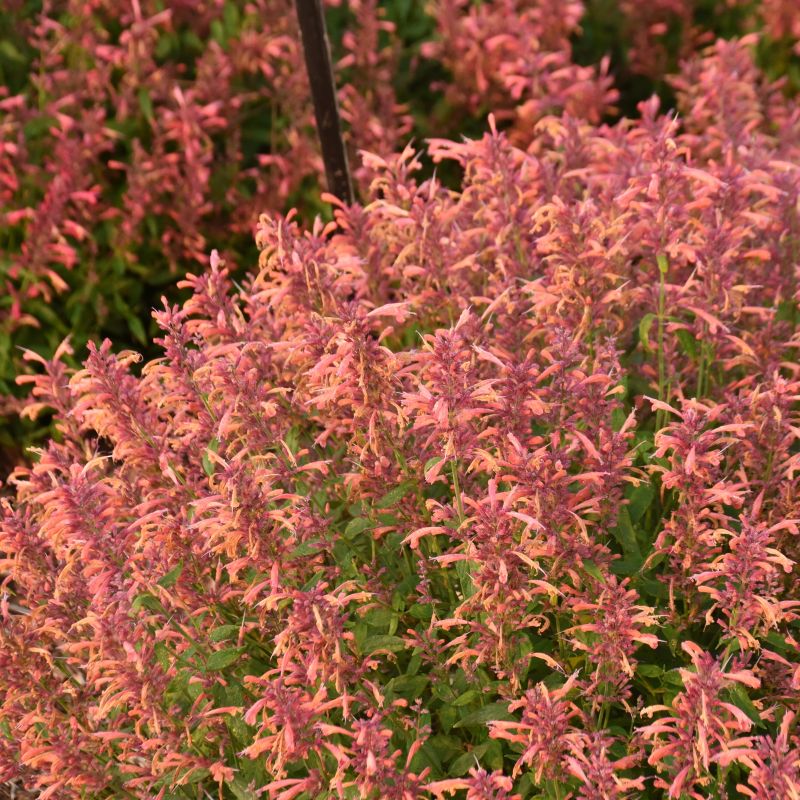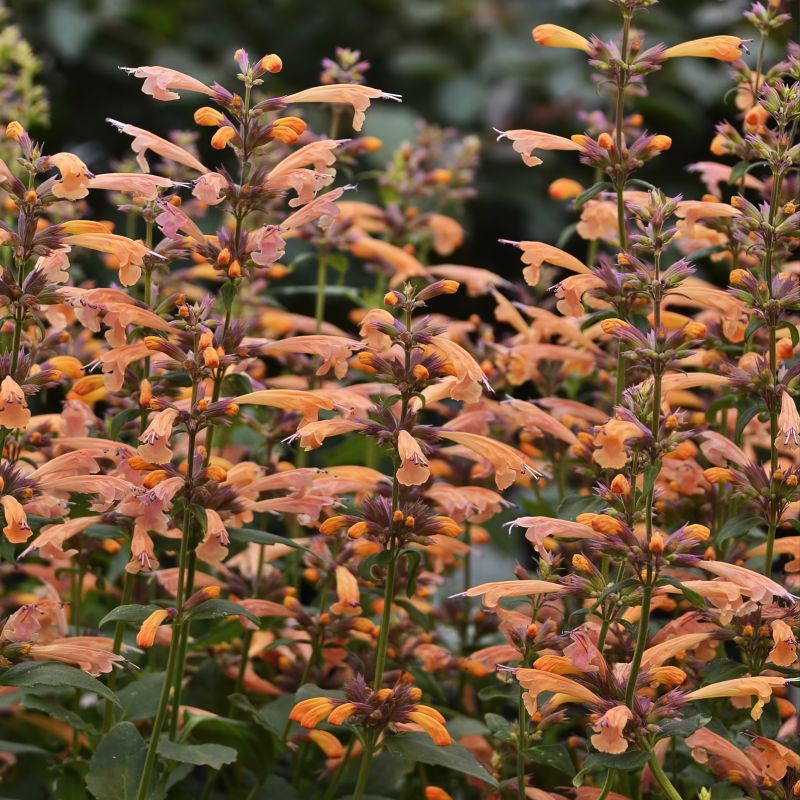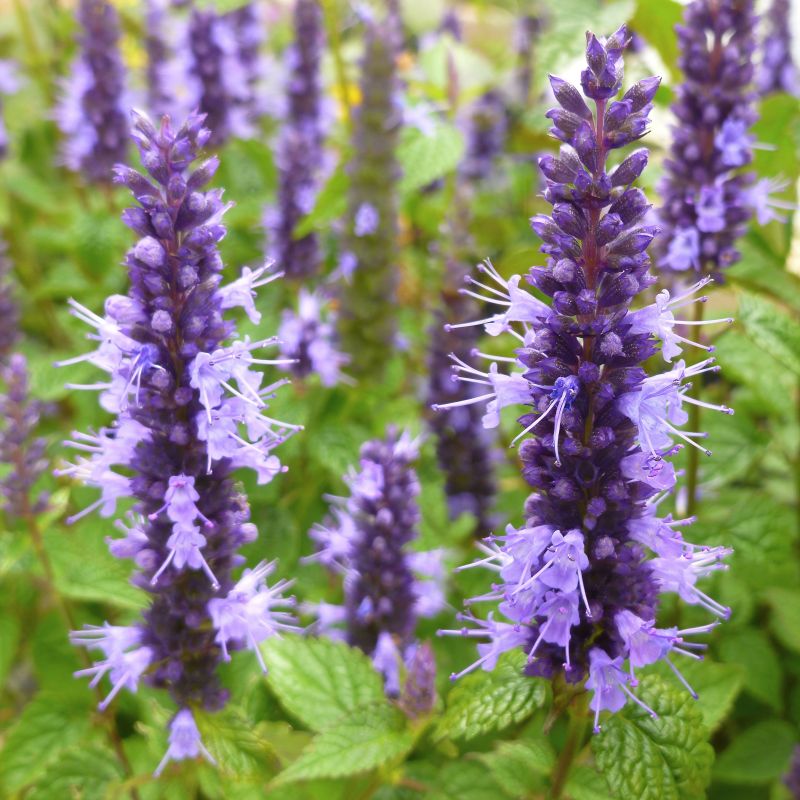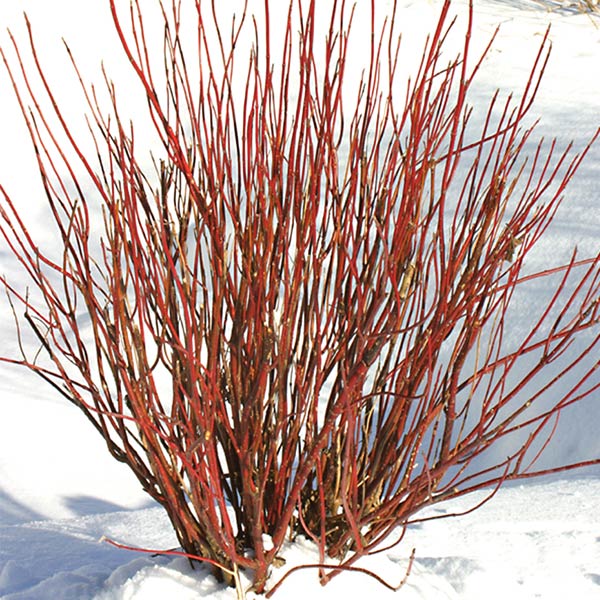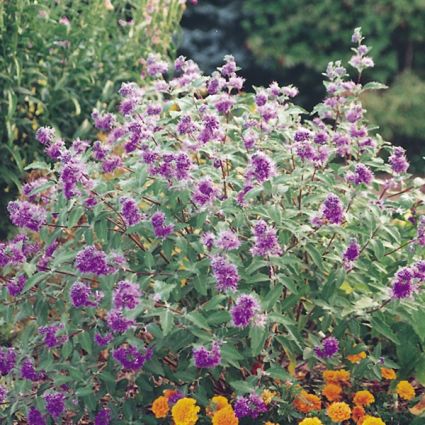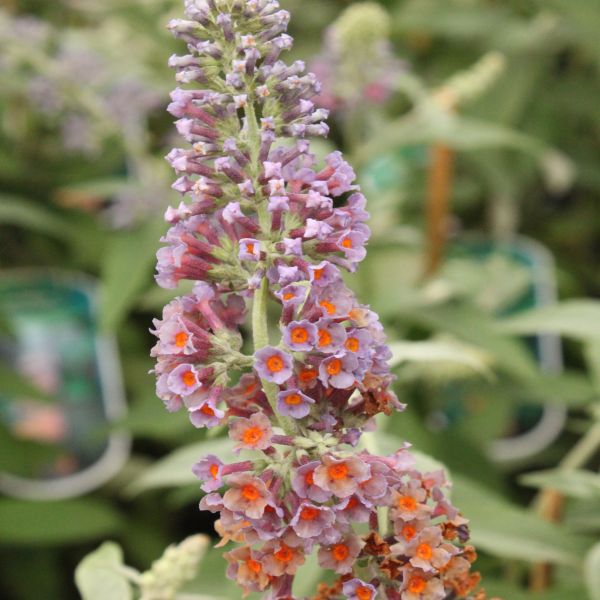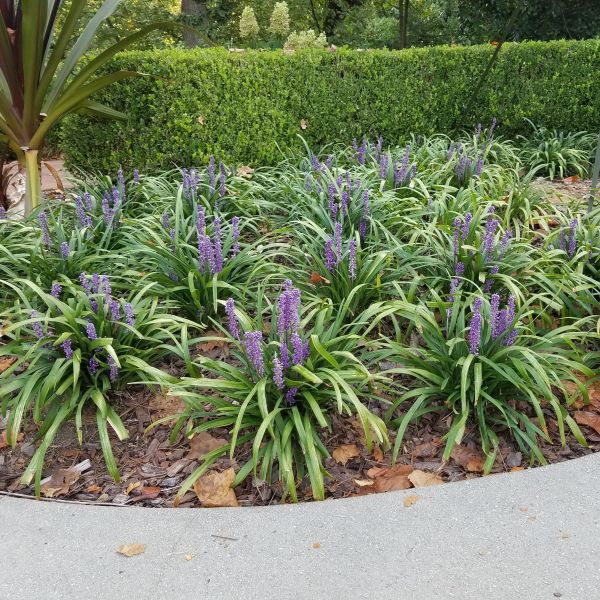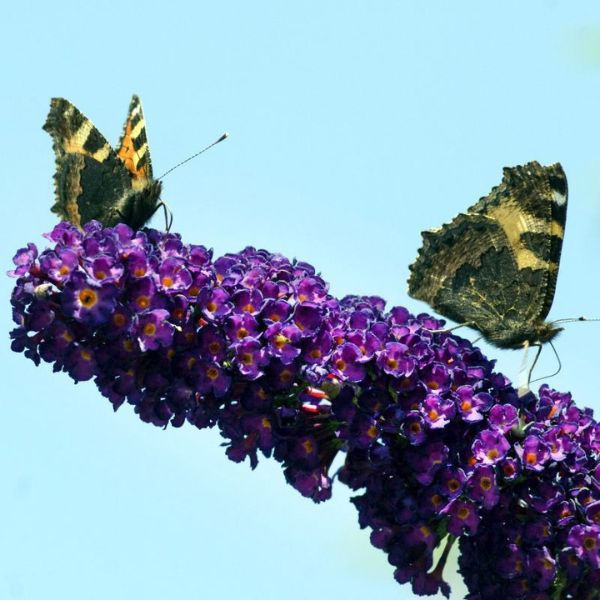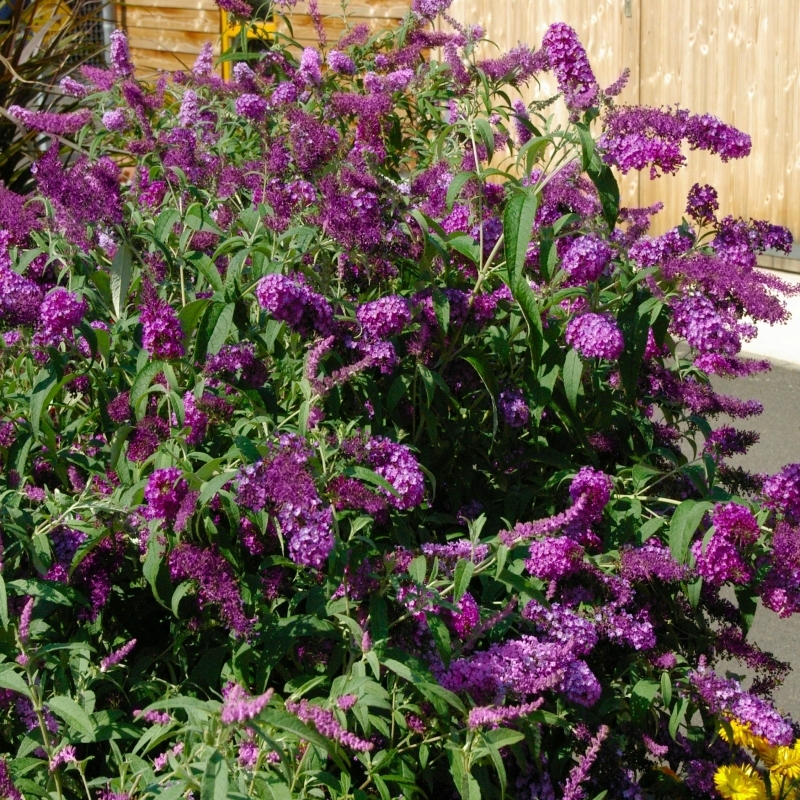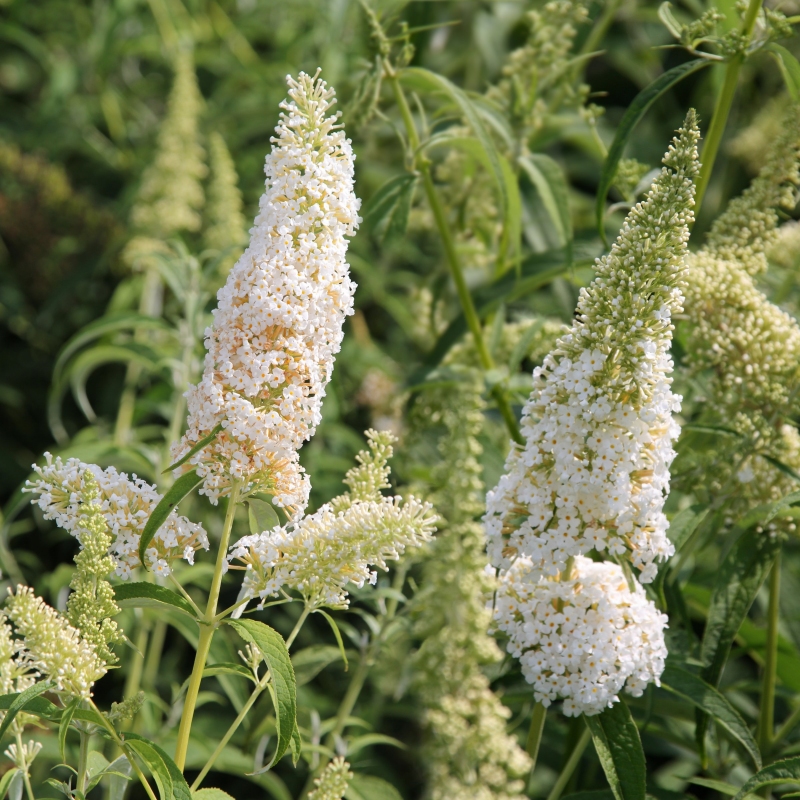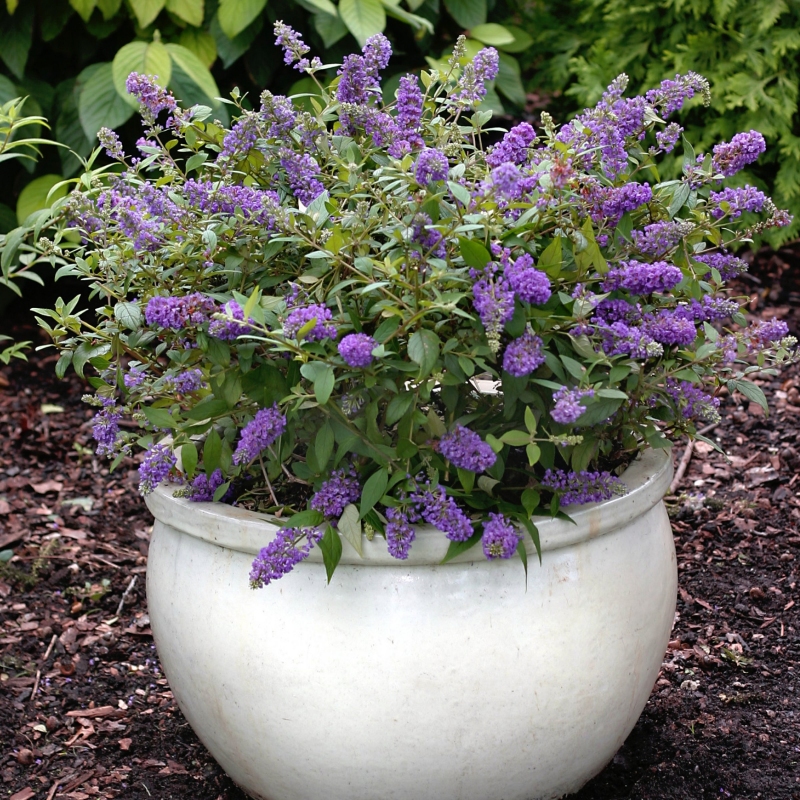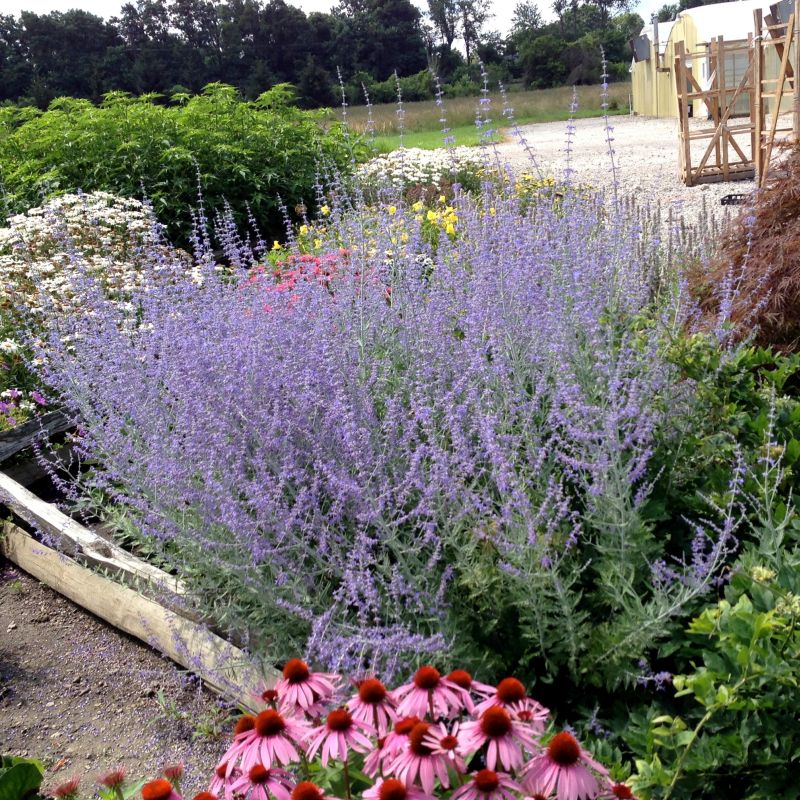
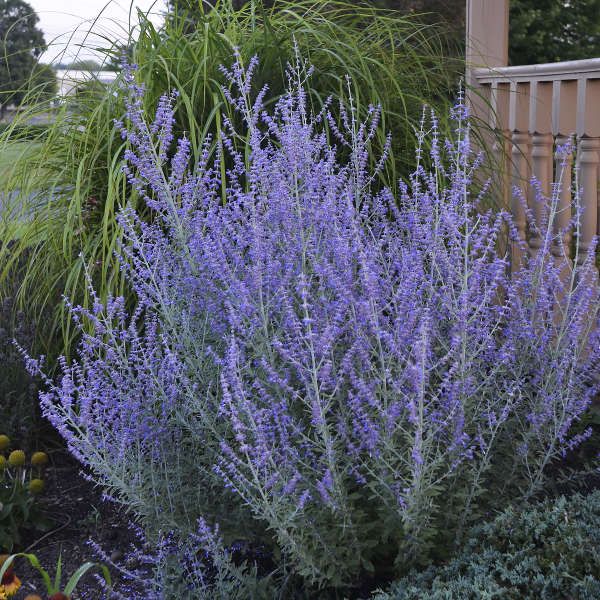
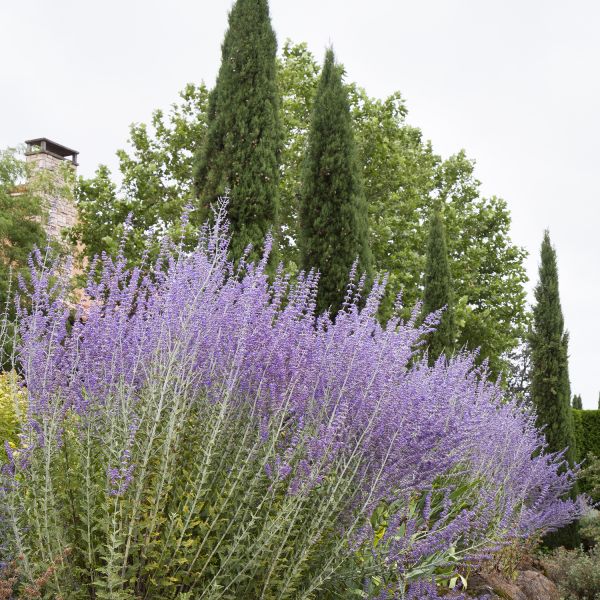
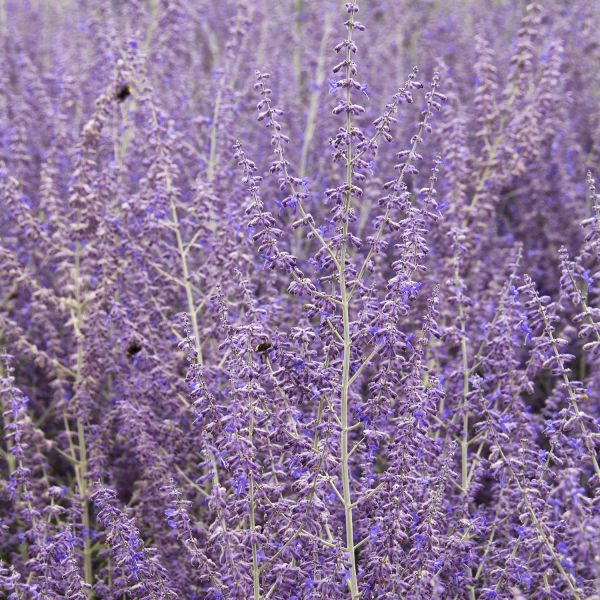
Russian Sage
Salvia yangii
20 reviews
Russian Sage
Salvia yangii
20 reviews
- Drought tolerant and low maintenance
- Attracts pollinators such as bees and butterflies
- Beautiful, airy texture and vibrant blue-purple flowers
- Recommended by landscape designers for optimal fit in real yards
$135.00
$193.00
30% Off
- Ships to 43215 in 3 to 7 days
- Free Shipping Over $150
- Plant Arrival Guarantee
- In Stock
- Free Plant Consult
$200 - Landscape-Approved: Every Plant We Sell Comes With Design Expertise Behind It
- 3.5 Gallon
- 1 Gallon
Not just beautiful - intentionally selected by ShrubHub's 3D landscape design team to fit real-world spaces and maximize yard potential.
Why Russian Sage?
Russian Sage is an herbaceous perennial plant native to Central Asia. It grows up to 4 feet tall and produces beautiful spikes of lavender-blue flowers that bloom from mid-summer to early fall. Its silvery-green foliage gives it a calming appearance. Russian Sage is tolerant of heat, drought, and deer, making it a great addition to any garden. It is also useful in attracting bees and butterflies.
People who loved this plant also bought
Sunlight
Russian sage plants thrive in full sun. They require at least 6 to 8 hours of direct sunlight daily to grow and bloom to their full potential. These drought-tolerant plants prefer hot and sunny conditions and may struggle in shaded or partially shaded area
Watering
Russian Sage is a drought-tolerant plant and requires average watering. It is best to water deeply but infrequently, allowing the soil to dry out between waterings. Once established, Russian Sage is highly resilient and can tolerate periods of drought.
Fertilizing
Russian Sage (Perovskia atriplicifolia) thrives in well-drained soil and does not require heavy fertilization. A balanced, all-purpose fertilizer applied in early spring is usually sufficient. It is important to avoid over-fertilizing, as this can result i
Mystic Elegance: Russian Sage - A Breath of Ethereal Beauty
Enter a realm of enchantment with Russian Sage, a mesmerizing perennial that captivates with its ethereal beauty and graceful presence. Like wisps of magic, this botanical wonder weaves a tapestry of delicate foliage and whimsical blooms, creating an atmosphere of mystic elegance in any garden or landscape.
Russian Sage enchants with its slender, silvery-gray leaves that dance upon the slightest breeze. Their velvety texture and intricate shape add a touch of sophistication to the landscape, creating a stunning contrast against other plants. As the sun's rays caress the foliage, it shimmers with a celestial glow, casting an ethereal ambiance that transcends the ordinary.
But it is the blossoms of Russian Sage that truly steal the show. This perennial produces clusters of tiny, lavender-blue flowers that rise above the foliage like ethereal clouds from midsummer through early fall. Their delicate petals sway gently, seemingly suspended in mid-air, as if in harmony with the whispers of the wind. The sight of these blossoms is a sight to behold, evoking a sense of tranquility and enchantment.
Beyond its aesthetic qualities, Russian Sage also holds a secret: its fragrance. As you approach this botanical marvel, a subtle aroma wafts through the air, reminiscent of fresh herbs and wildflowers. This delicate scent adds another layer of enchantment to the garden, inviting you to immerse yourself in its ethereal embrace.
It’s also a resilient and low-maintenance plant, ideal for those seeking beauty without excessive care. It's drought tolerance and adaptability to various soil types make it a reliable choice for arid or challenging landscapes. With minimal pruning and occasional watering, this perennial will flourish and continue to grace your garden with its captivating presence.
Russian Sage adds a touch of mystic elegance to any landscape design, whether used as a focal point, border planting, or incorporated into a cottage garden. Its tall, upright growth habit creates a vertical element that adds depth and dimension to the garden, while its silvery foliage and delicate blooms provide a soft and romantic allure.
Let the ethereal beauty of the Russian Sage transport you to a world of enchantment. Whether adorning your garden, lining pathways or creating a dreamy backdrop for other plants, this perennial promises to ignite the imagination and awaken a sense of wonder. Surrender to its allure and be enchanted by the mystic beauty of Russian Sage.
Plant Information:
| Botanical Name: | Salvia yangii |
| USDA Zones: | 5 - 8 |
| Water: | Moderate to Low |
| Exposure: | Full Sun |
| Soil Needs: | Well Drained |
| Mature Height: | 3 - 4 feet |
| Mature Spread: | 2 - 3 feet |





Pollination Info
Pollination Information for Russian Sage (Perovskia atriplicifolia)
Russian Sage (Perovskia atriplicifolia) is a herbaceous perennial plant native to Central Asia, including Afghanistan, Pakistan, and Iran. The plant belongs to the mint family (Lamiaceae) and is known for its grayish-green, fragrant foliage and showy, lavender-blue flower spikes, which bloom in late summer and early fall.
Like many plants, Russian Sage relies on pollination to reproduce. The flowers of Russian Sage are pollinated by a variety of insects, including bees, butterflies, and moths. These insects are attracted to the nectar and pollen produced by the flowers, and as they move from flower to flower, they pick up and transfer pollen, helping to fertilize the plant.
The flowers of Russian Sage are hermaphroditic, meaning that they have both male and female reproductive organs. Each flower contains four stamens (male reproductive organs) and a single pistil (female reproductive organ), which are located in the center of the flower. When an insect visits a flower, it typically lands on the lower lip of the flower and moves towards the center to access the nectar. As it does so, the insect brushes against the stamens, picking up pollen on its body. When the insect moves to another flower, some of the pollen is transferred to the pistil, fertilizing the ovules and allowing the plant to produce seeds.
In addition to attracting pollinators, Russian Sage also has a number of adaptations that help it to maximize pollination success. For example, the flowers are arranged in dense, elongated spikes, which increase the chances that an insect will visit multiple flowers in a single trip. Additionally, the flowers are fragrant, which helps to attract pollinators from a distance.
Overall, Russian Sage is an attractive and important plant for pollinators, providing both nectar and pollen. By planting Russian Sage in gardens and other green spaces, individuals can help support the health and well-being of pollinators in their communities.
FAQ
Russian Sage (Perovskia atriplicifolia) FAQ
What is Russian Sage?
Russian Sage is a perennial plant that is known for its tall, airy stems and silvery-gray foliage. It's scientific name is Perovskia atriplicifolia.
Where can I grow Russian Sage?
Russian Sage is a hardy plant that can be grown in a variety of soil types, but prefers well-draining soil. It can be grown in full sun or partial shade, and requires little to no watering once established.
When should I plant Russian Sage?
Russian Sage can be planted in the spring or fall, although fall planting is preferred in areas with hot summers. It is also recommended to plant Russian Sage in areas with good air flow to prevent powdery mildew.
How tall does Russian Sage grow?
Russian Sage can grow up to 5 feet tall and 4 feet wide. It has a tall, upright habit and is often used as a background plant in gardens and landscapes.
How do I care for Russian Sage?
- Water regularly until established, then little to no watering is needed
- Prune in early spring before new growth appears to encourage bushier growth
- Remove spent flowers to encourage more blooms
- Divide every 3-4 years to prevent overcrowding
What pests and diseases affect Russian Sage?
Russian Sage is generally pest and disease resistant, but can occasionally be affected by powdery mildew or spider mites. To prevent powdery mildew, plant in areas with good air flow and remove any affected leaves immediately. To control spider mites, use a blast of water or insecticidal soap.
Planting & Care
Planting Russian Sage
Russian Sage plants prefer to be planted in a location that receives full sun, in well-draining soil.
- Choose a location that receives full sun.
- Prepare the soil by loosening it up to a depth of 8-12 inches.
- Mix in compost or aged manure to improve soil texture and drainage.
- Plant the Russian Sage at the same depth as it was in its container.
- Space plants 2-3 feet apart to allow for air circulation.
- Water well after planting.
Caring for Russian Sage
Russian Sage plants are fairly low-maintenance, but here are some tips for keeping them healthy:
- Water regularly the first year to establish a deep root system.
- After that, Russian Sage can tolerate drought, but will look better if watered during dry spells.
- Don't over-fertilize, as this can lead to leggy growth and fewer blooms.
- In the spring, cut back any dead or damaged stems and prune to shape the plant.
- In the fall, it's a good idea to cut the plant back to a few inches above the ground to encourage new growth in the spring.
Check Out These Verified Customer Reviews:
Customer Reviews
4.7 out of 5 based on 20 reviews
Thank you! Your review has been submitted.
Absolutely stunning plant! The Russian Sage I received was in perfect condition and is thriving in my garden. The color and fragrance are amazing.
The plant was a bit smaller than expected, but it's growing well.
High quality Russian Sage, very pleased
Item has been added to your cart.



